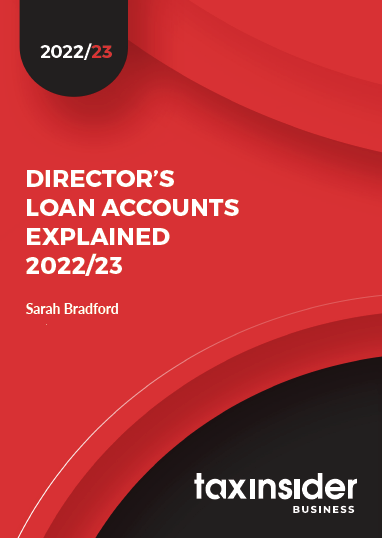
For more in depth discussion on this important area of business taxation, please see our recently released guide, Directors' Loan Accounts Explained.
__________________
It is common in family and owner-managed companies for director shareholders to withdraw funds which are debited to a director’s loan account (DLAs) with the company.
This often results in an overdrawn balance, and potential liabilities under the ‘loans to participators’ and benefit in kind provisions.
Credit where it’s due
However, by crediting the DLA (e.g., with earnings or dividends), it may be possible to reduce or extinguish an overdrawn DLA balance and mitigate adverse tax consequences.
The timing of DLA credits is important. For example, if an employee is a director at any time in the tax year, earnings from the company are received on the earliest of:
(a) When sums on account of the earnings are credited in the company’s accounts/records;
(b) If earnings for a period are determined by the end of that period, when it ends;
(c) If earnings for a period are not determined until after the period has ended when the amount is determined.
However, HM Revenue and Customs’ (HMRC’s) Employment Income manual lists examples of entries in accounts or records that are not yet earnings for tax purposes (at EIM42320):
- Draft entries in accounts and records (e.g., subject to formal agreement).
- Contingent earnings (i.e., which are subject to a condition being met in the future).
-
Provisions for future earnings which have not yet been agreed.
Dividend credits
A director shareholder’s overdrawn DLA balance might be cleared or reduced by crediting a dividend, if company law requirements are satisfied. The company’s constitution often provides for the payment of ‘final’ and ‘interim’ dividends; the distinction is important. For example, an interim dividend may be varied or rescinded at any time before payment and may therefore only be regarded as due and payable when actually paid (Potel v CIR (1971) 46 TC 958).
However, care is needed if interim dividends are being credited to the DLA. HMRC warns (in the Company Tax manual at CTM15205): ‘Payment is not made until such a right to draw on the dividend exists, expected to be when the appropriate entries are made in the company’s books.’ This will often be when the company’s accounts are prepared, after the end of the relevant accounting period. If so, the dividend is not taken into account until then.
Payback time
Alternatively, a director may simply repay an overdrawn DLA with a monetary amount (e.g., by bank transfer to the company). How should partial DLA repayments be allocated? The following general principles are derived from 19th century common law cases:
- Separate debts: Where a debtor makes a payment to a creditor, they may appropriate the money as they please. Otherwise, the right of appropriation devolves on the creditor (The Mecca [1897] AC 286).
-
Running accounts: Where the debtor has a ‘running account’ with the creditor (e.g., a bank account), a payment is allocated to the earliest debt (Clayton’s case [1816] 1 Mer 572).
HMRC’s guidance states (at CTM61600): ‘Where there are a number of loans/advances on a single account, any parties involved (participator and/or company) can specify against which debt they want to set the repayment. Where they do not specify, you should set the repayment against the earliest debt first following the rule in Clayton’s Case….’
Practical tip
Ensure DLAs are updated contemporaneously, and repayments are credited at the earliest opportunity.



